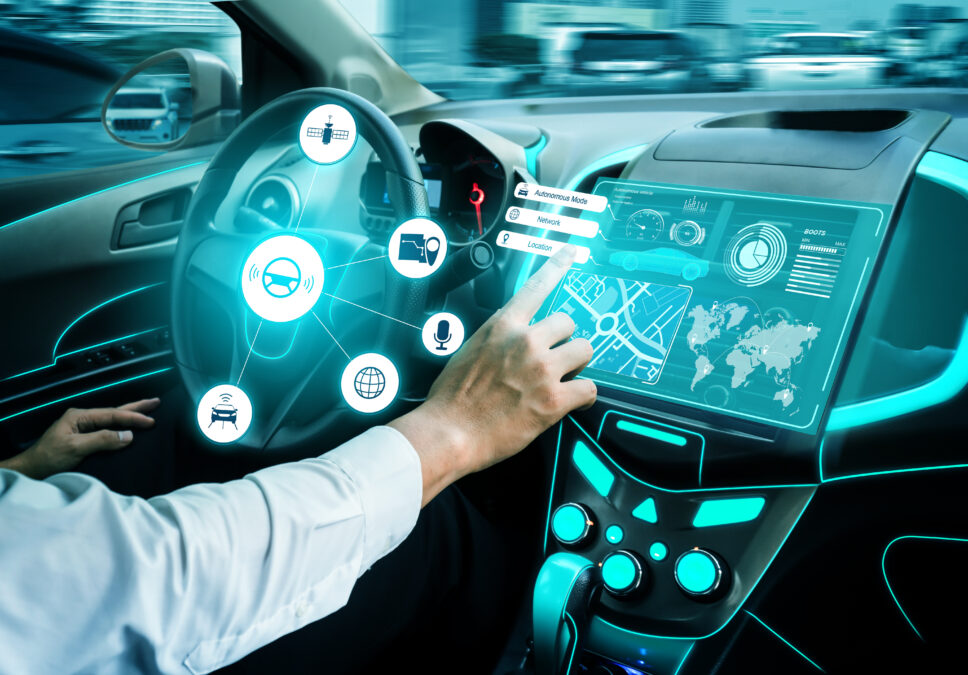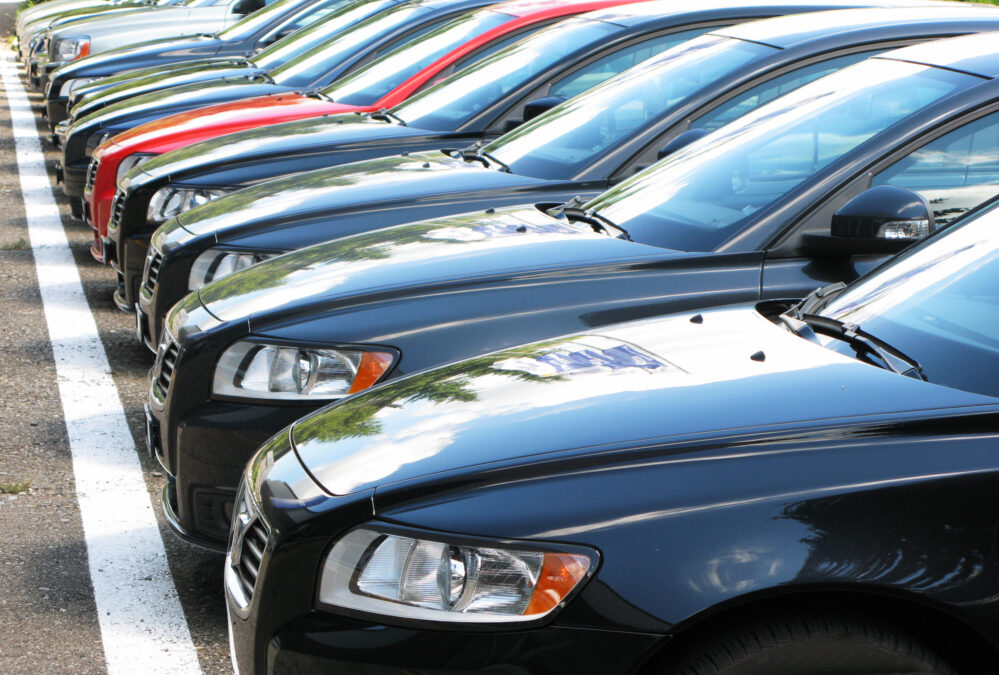The automotive industry is undergoing constant change. This is necessary to to meet customer expectations and remain competitive in the market. Of these various expectations, ‘on time vehicle delivery’ stands out as an important factor in mind of end-customers to gauge the reputation of the brand. In order to deliver the customers vehicles ‘on committed delivery time’, the existing vehicle distribution model is extremely complex and challenging for vehicle manufacturers due to various factors:
- Managing the supplier and manufacturing constraints to meet the production schedules,
- Dependency on various stakeholders (plant, carriers, shipments, external factors) to manage the vehicle distribution in the compound
- Managing vehicle quality and controlling lead times across different distribution networks
- Product homologation requirements at the port of entry to meet country specific requirements
- End to end visibility of vehicle distribution supply chain is often disrupted, which leads to unprecedented delays
At the same time, keeping the supply chain operations cost at optimum level without compromising customer service levels is another piece of the puzzle for vehicle manufacturers to solve.
The objective of this article is to outline the role of digital technology in transforming the finished vehicle distribution process. The scope of finished vehicle distribution starts with the vehicle receipt at manufacturing compound and ends at the last mile delivery to the dealership. Before we do a deep dive into the role of digital technology in vehicle distribution, it is important to understand the operating model of vehicle distribution along with associated challenges.
Related:Electric vehicles open new avenues for smart cities – As more people around the world move into the cities of tomorrow, the importance of the electric car revolution can’t be underestimated
Overview of vehicle distribution process and current challenges
The below figure 1 represents the logical stages of the vehicle distribution process. This section details out the set of activities performed during vehicle distribution journey along with the key challenges associated at each stage:

Stage (1~2) Manufacturing plant to vehicle compound:
At the end of manufacturing line, the ownership of the vehicle transfers from manufacturing to the sales function. At this juncture, sales distribution function (also referred as logistics) scans each individual vehicle at the compound, using hand-held devices. This in turn updates the vehicle inventory in the sales register. Today this activity is carried out manually in most of the automotive organisations and typically it requires (16)* persons per day to manage the scanning operations.
Challenges: (1) Manual process is prone to errors (2) Handheld devices dependency on Wi-Fi network to update the stocks. Any failure in network can disrupt the operations (3) Opportunity to optimize the manpower cost to the tune of £ 400 K* per annum.
*(The above figures assume plant annual production – 0.5 mn, Daily production= 1600, scanning takes 5 mins for each vehicle, requires 16 people in 2 shifts, Wages – £10/hr.
Stage (2~3) Vehicle compound to vehicle loading:
On successful transfer of vehicles to the sales organization (ERP update), vehicles are then parked at the designated bays in the distribution compound for further loading into the carriers. From this point, load building for vehicles is planned based on the carriers availability at various routes.
Challenges: (4) Capability to allocate the parking lot for each planned vehicle if missing in the compound, it may result into wastage of man hours to find the parking slots for each vehicle and then tracing the vehicle back for loading into the carrier. Sometimes this results into overall delay of carrier movement/missing the scheduled shipment and ultimately impacting the customer promise delivery date. (5) Many automotive organisations still build their vehicle loads manually instead leveraging optimisation algorithms to recommend the best load combination by optimum utilization of available carrier capacity.
Stage (4~7) Carrier check in/out from manufacturer compound till last mile delivery (at the dealership)
The load build information is shared with carriers (normally XML feeds) and carrier drive uses paper based documentation at entry/exit gates. In the event of export vehicles, these vehicle are further loaded into the sea vessels for their respective route. On arrival at port of entry, vehicles are inspected (PDI) and if applicable they undergo homologation process to meet the country specific requirements. These vehicles are then shipped from the destination port to the dealership sites. On arrival, dealer acknowledges the receipt of the vehicle.
Challenges: (6) In transit vehicle tracking across different distribution networks is often missing among many vehicle manufacturers. This information is critical for the manufacturers to expedite the shipment (if delayed) to honor the customer date commitment (7) Similarly in the event of vehicle damage/accident, the supply chain visibility can help next leg of the distribution to plan their activities in advance to absorb the further delays.
See also: What you need to know about vehicle-to-vehicle communication – Embraced as one of the most significant technological breakthroughs in recent years, V2V is expected to improve the safety of our roads by allowing cars to communicate details like speed and GPS position to one another to help drivers avoid accidents
Role of Digital technology to transform the vehicle distribution supply chain
a) RFID Technology:
Each vehicle from the end of manufacturing line can be tagged with RFID tag. These tags can contain vehicle identification number (VIN). At vehicle ownership transfer point (manufacturing to sales), RFID readers can scan the tag and VIN associated details like (vehicle destination, parking location, vehicle status, carrier details etc. can be pulled from transportation management system. These details can be displayed on the screen for driver information. The vehicles with clear status can proceed ahead for compound through automated barrier.
This process can eliminate the manual intervention to scan each vehicle during vehicle movement from manufacturing to distribution compound. These RFID tags can be further leveraged to locate the vehicles at compound during carrier loading. At every parking spot, drivers can use mobile apps to scan the VIN along with updated GPS location. This information can be stored in central system to locate the vehicles during carrier loading.
b) IoT (Internet of Things) Platform:
Multiple use cases can be realised using IoT platform in vehicle distribution management:
Remote diagnostics and repair:
IoT platform can be leveraged to push ‘software over the air’ into the transit vehicles. This capability can enable manufacturers to execute recall campaigns, remote diagnostics and remote repair of the vehicles. The vehicle parameters like battery life, tyre pressure etcetera can be communicated to the dealers in advance for corrective action.
Vehicle tracking:
In the event of carrier accident, telematics unit in the vehicle can send the communication (e-call feature) to the manufacturer along with the location coordinates of the accident.
Load optimisation:
In many occasions, carrier/vessels full utilization cannot be realised due to manufacturing hold on certain vehicles. In such occasions, IoT platform can locate eligible vehicle which can make up for the under- utilised loads.
c) Mobility:
Mobile applications can be developed to provide the update/provide GPS location of the vehicles for compound management and to track in transit vehicles.
Similarly ‘Transit Quality Inspection’ and ‘Proof of delivery’ of the vehicles can be enabled through mobile apps to improve the process efficiency and visibility.
d) Analytics:
Analytics capabilities can be leveraged in the vehicle compound to allocate the parking slots based on various parameters: final destination, carriers assigned to pick up vehicles, customer committed delivery date, prioritization, available slots etc.
Vehicle load build: Advanced load optimization algorithms that consider various parameters like vehicle dimensions, trailer availability, destinations, carrier availability, trailer capacity etcetera can be leveraged to recommend the best load combination through optimum utilization of available carrier capacity.
e) Autonomous vehicles:
This technology is still in a very nascent stage of maturity to be applied commercially in the finished vehicle distribution. However, when the technology does mature, this can be applied in low risk scenarios such as self-driven vehicles rolling out of manufacturing plant into compounds; autonomous trailer loading based on allotted carrier/ trailer information etc.
See also: How autonomous vehicles are driving change for smarter cities – Dr Ingo Stuermer, Global Engineering, APTIV argues in Information Age that the road to the age of smart cities will be paved by autonomous vehicles.
Conclusion:
The vehicle distribution supply chain plays a strategic role in achieving the customer satisfaction by ensuring timely and cost effective delivery of the vehicles. Emerging digital technologies promise to deliver capabilities that can help vehicle manufacturers to achieve significant business results.
Munish Sharma heads Customer Experience Management (CEM) value engine of the Innovation and Transformation Group at TCS UK & Ireland. He has over 17 years of automotive industry experience focusing on digital transformation of manufacturing industry. He completed his bachelors of engineering degree in Industrial production and certified supply chain consultant from Indian Institute of Technology (IIT), India.







